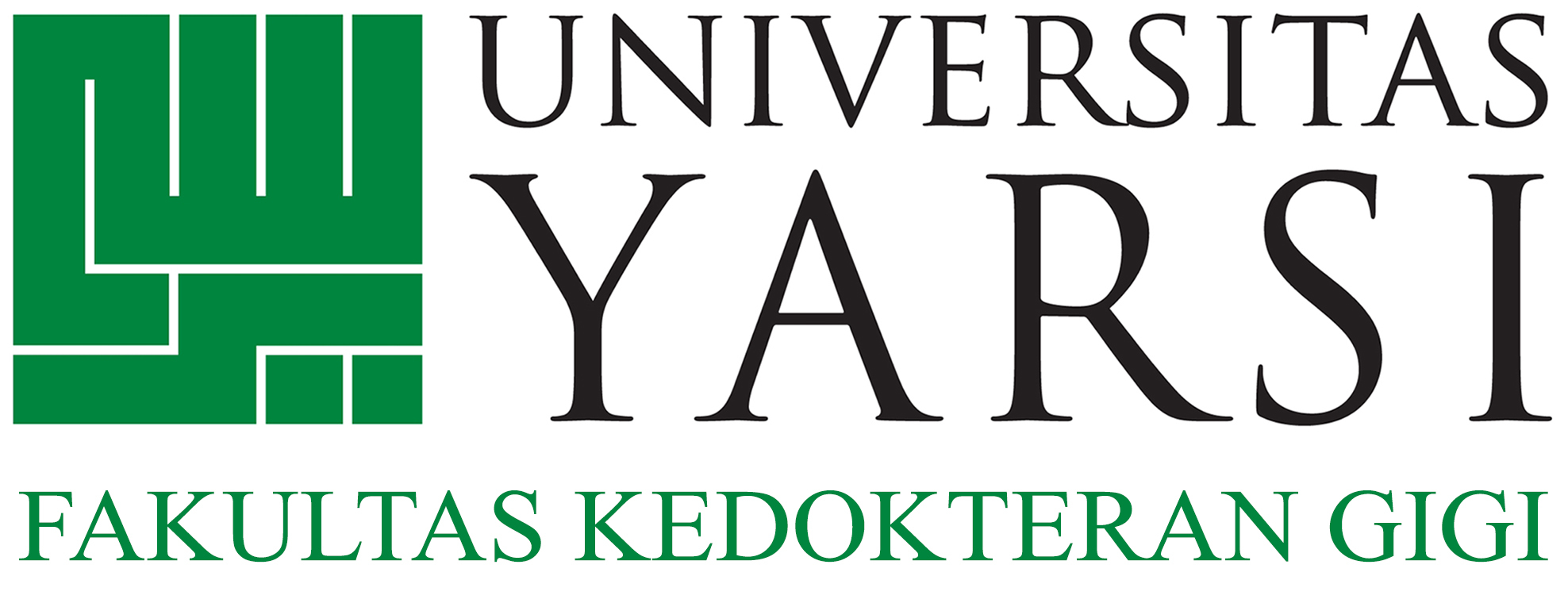Antibacterial Effectiveness of Black Cumin (Nigella sativa L.) Against the Growth of Staphylococcus aureus Bacteria as a Denture Cleaner
Keywords:
Nigella sativa;, denture cleaner;, Staphylococcus aureus;Abstract
Introduction: Black cumin (Nigella sativa L.) is a miraculous and multifunctional herbal plant that has the potential to treat various diseases since the time of the Prophet Muhammad. One of the potential concerns of the scientific community is the antibacterial effect of black cumin extract. This is due to the content of its main active substance, thymoquinone. Black cumin is safe for consumption, easily available, and harmless to the environment. Objective: This study aims to determine the antibacterial effectiveness of black cumin-containing solution and black cumin oil-containing emulsion, and its function as a denture cleaner. Research Methods: This study was a laboratory experimental study. Using disc diffusion method for antibacterial test. This study used solutions containing black cumin and emulsions containing black cumin oil with concentrations of 10%, 20%, 30%, 40%, 50%, alkaline peroxide solution, sodium perborate solution, and distilled water. The total samples used were 48 samples with 3 repetitions in each group. Results: The results of the One Way Anova test showed that there was a significant effect on the solution against S. aureus bacteria and a significant difference between each concentration (p <0.05). Conclusion: The solution containing 50% black cumin was found to have better antibacterial effectiveness with an average inhibition zone diameter of 11.08 mm compared to the emulsion containing 50% black cumin oil which only had an average inhibition zone diameter of 2.61 mm.
References
Gawron, G., Krzyczkowski, W., Lemke, K., Oldak, A., Kadzinski, L. & Banecki, B. Nigella sativa seed extract applicability in preparations agains methicillin-resistant staphylococcus aureus and effects on human dermal fibroblast viability. Journal of Ethnopharmacology. 2019. pp.1-4.
Ermumcu, M. & Sanher, N. Black cumin (nigella sativa) and its active component of thymoquinone: effects on health’, J Food Health Sci. 2017. 3(4). pp. 171.
Warta Penelitian dan Pengembangan Tanaman Industri. Adaptasi jintan hitam (nigella sativa) di dataran tinggi jawa barat. 2016. 22(3). pp.13-16.
Grandiosa, R. Efektivitas penggunaan larutan filtrat jintan hitam (nigella sativa) dengan konsentrasi berbeda terhadap pertumbuhan bakteri aeromonas hydrophila secara in-vitro dan uji toksisitasnya terhadap ikan mas (Cyprinus carpio). Skripsi. 2010. Universitas Padjajaran.
Ariamanesh, H., Tamizi, N., Yazdinezhad, A., Salah, S., Motamed, N. & Amanloo, S. The effectiveness of nigella sativa alcoholic extract on the inhibition of candida albicans colonization and formation of plaque on acrylic denture plates: an in vitro study. J Dent Shiraz Univ Med Sci. 2019. 20(3). pp.171-177.
Garbacz, K., Jarzembowski, T., Kwapiz, E., Daca, A. & Witkowski, J. Do the oral staphylococcus aureus strains from denture wearer have a greater pathogenicity potential. Journal of Oral Microbiology. 2018. Vol.11. pp.1-4.
Lewis, N., Parmar, N., Hussain, Z., Baker, G., Green, I., Howlett, J., Kearns, A., Cookson, B., McDonald, A., Wilson, M. & Ready, D. Colonisation of dentures by staphylococcus aureus and MRSA in out-patient and in-patient populations. Eur J Clin Microbiol Infect Dis. 2015. Vol.34. pp.1823-1826.
Gultom, W. Hubungan jumlah koloni staphylococcus aureus dan laju alir saliva pada pengguna gigi tiruan penuh. Skripsi. 2018. Universitas Sumatera Utara.
Neppelenbroek, K.H. The importance of daily removal of the denture biofilm for oral and systemic disease prevention. J Appl Oral Sci. 2015. 33(6). pp.547-548.
Utami, S. Pengaruh penggunaan denture cleanser terhadap pertumbuhan candida albicans pada basis gigi tiruan resin akrilik. Skripsi. 2015. Universitas Hasanuddin.
Sari, L.O. Pemanfaatan obat tradisional dengan pertimbangan manfaat dan keamananny. Majalan Ilmu Kefarmasian. 2006. 3(1). pp.1-7
Islam, M.T., Guha, B., Hosen, S., Riaz, T.A., Santos, J.V.O. & Junior, J.J.S. Nigellalogy: a review on nigella sativa. 2017. 3(6). pp.167-173.
Ningtyas, E.A.E. Aktivasi pemakaian jintan hitam (nigella sativa) terhadap respons imun pada gigi yang mengalami inflamasi. J.K.G Unej. 2012. 9(1). pp.48-53.
Rajsekhar, S. & Kuldeep, B. Pharmacognosy and pharmacology of nigella sativa: a review. IRJP. 2011. 2(11) pp.36-39.
Srinivasan, K. Cumin (cuminum cyminum) and black cumin (nigella sativa) seed: traditional uses, chemical constituents, and nutraceutical effects. Food Quality and Safety. 2018. 2(1). pp.2.
Duerden, B.I., Reid, T.M.S., Jewsburry, J.M. & Turk, D.C. A new short textbook of microbial and parasitic infection. Mill Road: Hodder & Stroughton Ltd. 1987. pp.74-76.
Caroll, K.C., Hobden, J.A., Miller, S. & Morse, S.A. In: Jawetz, Melnick, & Adelbergs, eds. Medical microbiology. 27th edition. Jakarta: EGC. 2016. pp.215-223.
Gultom, W. Hubungan jumlah koloni staphylococcus aureus dan laju alir saliva pada pengguna gigi tiruan penuh. Skripsi. 2018. Universitas Sumatera Utara.
Smith, A.J., Jackson, M.S. & Bagg, J. The ecology of staphylococcus in the oral cavity. J Med Microbiol. 2001. Vol.50. pp.940-946.
Dullea, C.V., Pollack, A.A., Smith, S.R., Gendreu, L.D., Ahn, J.H., Smetana, A.J., Dreijer, G. & Alexander, D.C. Soaking with denture cleanser tablets cleans where brushing can miss, pp.352.
Peracini, A., Andrade, I.M., Paranhos, H.F.O., Silva, C.H.L. & Souza, R.F. (2010) Behaviors and hygiene habits of complete denture wearers. Braz J Dent. 2003. 21(3). pp.247-252.
Istiqomah. Perbandingan metode ekstraksi maserasi dan sokletasi terhadap kadar piperin buah cabe jawa (Piperis retrofracti fructus). Skripsi. 2013. Universitas Islam Negeri Syarif Hidayatullah.
Yusvita, L.Y. Efek span 80 dan tween 80 sebagai emulgator terhadap sifat fisis dan stabilitas emulsi oral a/m ekstrak etanol buah pare (Momordica charantia L.) aplikasi desain faktorial. Skripsi. 2010. Universitas Sanata Dharma.
Sulvita, N. Efektivitas minyak habbatussauda (Nigella sativa) terhadap pertumbuhan staphylococcus aureus. UMI Medical Journal. 2008. 5(1). pp.14-23.
Clorinda, F.R. Uji kemampuan minyak jintan hitam (Nigella sativa) dalam menghambat pertumbuhan bakteri staphylococcus aureus secara in vitro. Skripsi. 2012. Universitas Jember.
Sayuti, M. Pengaruh perbedaan metode ekstraksi, bagian, dan jenis pelarut terhadap rendemen dan aktivitas antioksidan bambu laut (Isis hippuris). Technology Science and Engineering Journal. 2017. 1(3). pp.166-174.
Downloads
Published
How to Cite
Issue
Section
License
Copyright (c) 2025 Dharma Satya, Asha Mustika Putri, Dewi Nurul Mustaqimah, Siti Nur Riani

This work is licensed under a Creative Commons Attribution-ShareAlike 4.0 International License.

This work is licensed under a CC Attribution-ShareAlike 4.0

 Dharma Satya
Dharma Satya
 YARSI
YARSI





